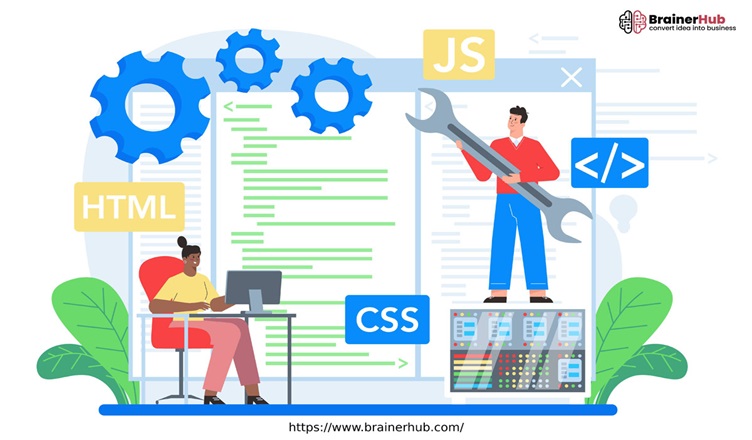Table of Contents
What is the Main Use of Python?
Python is a versatile and powerful programming language used in a wide array of applications. Here are the main uses of Python:
Web Development: Specialized Python Development Solutions is widely used for developing web applications. Frameworks like Django and Flask facilitate rapid development and clean, maintainable code. Django, in particular, is known for its “batteries-included” approach, providing a lot of built-in functionality.
Data Analysis and Visualization: Python is a preferred language in the data science community. Libraries such as Pandas, NumPy, and Matplotlib enable efficient data manipulation and visualization. Tools like Jupyter Notebooks allow for interactive data exploration and reporting.
Machine Learning and Artificial Intelligence: Python is extensively used in the field of machine learning and AI. Libraries such as TensorFlow, Keras, and Scikit-Learn make it easy to develop, train, and deploy machine learning models.
Automation and Scripting: Python’s simplicity and readability make it an excellent choice for writing scripts to automate repetitive tasks. Tools like Selenium can be used for web automation, while libraries like PyAutoGUI enable GUI automation.
Software Development: Python is used for developing a variety of software applications, from small scripts to large-scale enterprise solutions. Its ease of integration with other languages and tools makes it a flexible choice for software development.
Scientific Computing: Python is widely adopted in scientific research for tasks such as numerical simulations, computational biology, and physics. Libraries like SciPy and SymPy provide tools for complex mathematical computations.
Game Development: Python can be used to develop simple games. Libraries such as Pygame provide functionalities to create 2D games, making it a great starting point for aspiring game developers.
Education: Python is often used as a teaching language due to its straightforward syntax and readability. It helps beginners learn programming concepts without being overwhelmed by complex syntax rules.
Networking: Python has libraries like Twisted and Asyncio that are used to build network applications, handle network protocols, and manage asynchronous communication.
Internet of Things (IoT): Python is increasingly used in IoT applications due to its ability to run on various devices. Libraries like MicroPython allow Python to be used on microcontrollers, making it suitable for IoT projects.
Overall, Python’s versatility, ease of learning, and strong community support make it a powerful tool for developers across many domains.
Pros of Using Python for Web Development
1. Ease of Learning and Use
Pros: Python is renowned for its simple, readable syntax, which makes it accessible for beginners. This simplicity also accelerates the development process, allowing developers to write clean and maintainable code quickly.
2. Extensive Libraries and Frameworks
Pros: Python offers a rich set of libraries and frameworks such as Django, Flask, and Pyramid. These frameworks simplify many aspects of web development, from handling HTTP requests and responses to database operations and user authentication.
3. Rapid Development
Pros: The combination of an easy syntax and powerful frameworks allows for rapid prototyping and development. This is particularly beneficial for startups and projects with tight deadlines, as it reduces the time to market.
4. Scalability
Pros: Python applications can scale smoothly to accommodate increased traffic and functionality. Frameworks like Django are designed to handle high-traffic applications, making Python suitable for both small and large-scale web applications.
5. Strong Community Support
Pros: Python boasts a large and active community, which means extensive resources, tutorials, and third-party modules are available. This community support can be invaluable when encountering issues or seeking to improve one’s development skills.
6. Versatility
Pros: Python is a versatile language that can be used for various types of applications beyond web development, such as data analysis, machine learning, and automation. This allows developers to use the same language across different projects and domains.
Cons of Using Python for Web Development
1. Performance Limitations
Cons: Python is generally slower than compiled languages like C++ or Java. This can be a drawback for performance-intensive applications where execution speed is critical. However, for most web applications, this is not a significant issue.
2. Threading Issues
Cons: Python’s Global Interpreter Lock (GIL) can be a bottleneck for CPU-bound multi-threaded applications. While it does not affect I/O-bound applications as much, it can limit the performance of applications that require heavy computation.
3. Mobile Development
Cons: Python is not the best choice for Mobile application development. While there are tools like Kivy and BeeWare, Python lacks the native support and performance optimization seen in languages like Swift for iOS or Kotlin for Android.
4. Memory Consumption
Cons: Python can consume more memory compared to some other languages. This might not be a major concern for most web applications, but it can be a limitation for applications running in environments with limited memory resources.
5. Database Access Layers
Cons: While Python offers robust ORM tools like SQLAlchemy and Django ORM, some developers find these layers can introduce additional complexity and overhead compared to direct database access methods available in other languages.
Conclusion
Python is a powerful and versatile language that offers many advantages for web development, including ease of learning, rapid development capabilities, and strong community support. However, it does have some limitations, particularly in terms of performance and mobile development. Understanding these pros and cons can help developers and businesses make informed decisions about whether Python is the right choice for their web development projects.
Bhoomika Kukadiya is SEO Executive at BrainerHub Solutions, pioneering tomorrow’s digital frontiers. A tech-savvy creative on a quest for online innovation. Guiding brands to transform clicks into triumphs. Your reliable ally in the dynamic realm of search engine expertise and creativity. Follow Instagram, Facebook, Linkedin, Twitter
